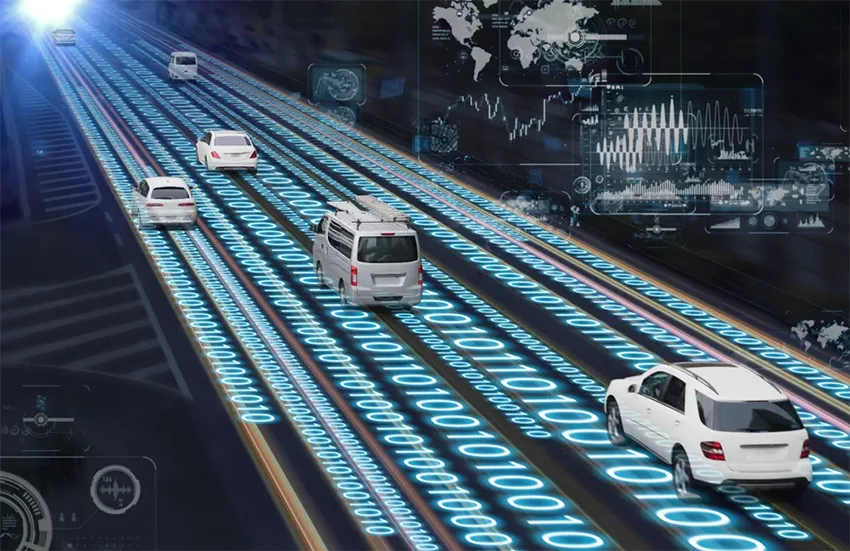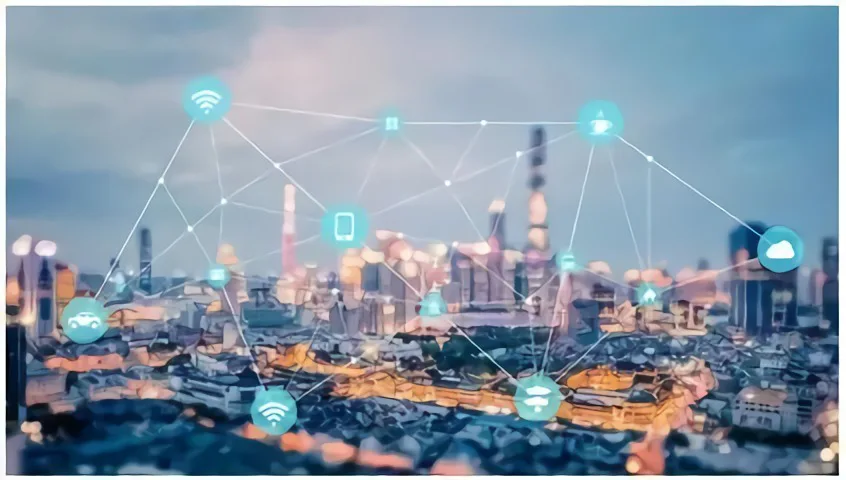智慧交通是指以交通為基礎的服務系統。 現代電子資訊技術. 以收藏為主要特點, 加工, 釋放, 交換, 分析並利用數據, 智慧交通可以為交通參與者提供多樣化的服務. 本文為您全面介紹智慧交通.
1. 什麼是智慧交通?

智慧交通是指以現代電子資訊技術為基礎的面向交通的服務系統. 以收藏為主要特點, 加工, 釋放, 交換, 分析並利用數據, 智慧交通可以為交通參與者提供多樣化的服務; 基於智慧交通 (簡稱ITS), 智慧交通充分利用物聯網, 雲端運算, 網際網路, 人工智慧, 自動控制, 移動技術在交通領域的應用,正在透過高科技收集交通信息, 從而控制, 監控和支援交通管理等全方位領域, 交通和公共旅行, 支撐交通建設全過程. 因此, 它可以為交通系統提供能力(洞察力, 連接性, 分析, 預報, 控制, ETC。) 在不同的地區, 城市乃至更廣闊的時空, 從而確保交通安全, 提高交通基礎設施的效能,提高交通系統的營運效率與管理, 從而確保公共出行順暢和經濟永續成長.
2. 智慧交通的優點和缺點

智慧交通有哪些好處?
交通要素: 連接性
交通基礎設施 (道路, 橋樑, 附屬設施, ETC), 運輸設備(汽車, 船舶, ETC), 人和貨物都包含在所有運輸要素中, 所有這些都可以在新型感測器的環境下互連並共享自動控制, AD HOC網路與自動控制技術. 具有多維感知功能, 智慧決策, 遙控, 自動導航, 交通基礎設施和設備能夠實現自動預測和運營.
虛擬與現實、線上與線下的融合
將來, 使用者可以在運輸系統上提出貨物運輸需求, 哪個, 收到需求後, 透過大數據等技術在線分析需求, 雲端運算, and artificial intelligence to come up with relevant transportation strategies and planning, and then hand it over to the offline transportation facilities to complete the actual transport.
門到門綜合運輸
The future transportation system is viewed as an integral transportation service provider. It is unnecessary for customers to understand the transport system’s internal architecture and operation. 反而, they only need to offer transportation demand from A to B. Based on the information, the system will provide a whole set of solutions including the “one ticket system” of ticket sales as well as multimodal transport, seamless connection, continuity and completeness of route concerning the transport party.
為使用者提供適應需求的適應性服務
Under the premise that comprehensive perception, 即時通訊和海量數據分析能力不斷發展, 使用者與系統平台互動更加頻繁、緊密, 讓交通系統更加智能, 可以提供個人化的, 因應實際狀況變化,為各類用戶提供多角化、人性化的交通服務.
運輸生產組織可靠 & 高效率管理
智慧交通包含智慧交通基礎設施, 運輸設備, 運輸組織服務, ETC. 生產組織和管理者有更詳細的, 及時準確地了解各種運輸要素,透過智慧技術更有效地控制和應對各種風險,制定更科學的運輸生產策略, 從而為交通生產組織和管理提供更高的可靠性和效率.
智慧交通的缺點:
現有交通管理系統, 主要以人工幹預管理和十字路口號誌控制為主, 缺乏道路資訊收集點. 其車輛和道路管理獨立於系統運行, 導致不完美, 管理不準確、不及時. 其主要缺點包括:
非動態
昂貴的感測設備限制了大規模和大規模部署 智慧交通系統, 道路資訊採集較少集中在路網主要節點(主要是交叉口). 所有這些限制導致無法全面有效地採集交通系統中的各種信息,從而無法動態、準確地傳遞交通系統的確切狀態.
非- 全球的
現有智慧交通系統內部, 專案規劃獨立於系統建設. 各系統收集的資訊不能互通, 不同設備廠商的系統或設備之間的介面不開放, 導致無法有效利用獨立系統之間交通資訊潛在的協調效應來分析交通狀況和判斷. 也, 可能會導致系統及相關功能的重複建設, 以及資料資訊的重複收集, 從而使得獨立系統的結果不全面、不俱全球性.
3. 智慧交通面臨哪些挑戰

隨著都市化的發展, 出遊需求旺盛. 國內外城市迫切需要更智慧的交通系統來解決交通擁堵等交通問題, 交通事故, 空氣污染, 運輸效率低, ETC. 人們認為,目前, 隨著數位化的發展, 智慧化和自動化 城市智慧交通, 仍面臨三大挑戰.
第一的, 系統缺乏取得城市道路WLAN網路偵測資料的能力. 在大多數城市, 前端設備較少,無法感知路網交通狀況, 並且存在覆蓋問題, 設備可靠性和數據連續性, 難以滿足交警業務精細化管理的要求.
第二, 系統無法分析處理新的網路數據. 隨著高頻、高精度浮動車數據和位置數據的不斷增加, 訊號控制相關的演算法和產品需要突破,才能充分發揮這些數據的作用.
第三, 系統缺乏演算法和大數據分析運算能力. 是否為訊號優化, 道路狀況分析, 軌跡分析, 或影像識別, 都需要高階演算法支持, 以及即時數據的大規模運算能力.
4. 智慧交通有哪些解決方案

智慧城市交通整體解決方案
未來城市向高智慧方向發展, 強調運用未來科技提升城市治理服務轉型, 從而達到高效, inclusive and sustainable urban development. 未來的城市將發展成為可感知的城市, 經營的, 控制和服務. 重點建設四城 (4C) 基於智慧交通與未來科技. 他們是“感知城市”, 《網上演繹城市》, “管理城市”與“服務城市”.
第一步建立基於空間單元大數據的全像感知城市. 首先, 制定智慧路口、智慧路段建設標準,推動以智慧道路為核心的新一代道路全像感知系統建設,實現多層次, 歷史級甚至車道級感知; 第二, 對人進行動態全方位監測評價, 利用大數據技術和交通追溯技術的車輛和道路. 也, 大數據 + 利用AI技術支援交通壅塞機制分析, 交通事件發現 (例如道路危險的預警), 輿情分析, 警察日常巡邏, ETC.
二是建立線上投影城市,支援複雜環境下交通場景的再現與預測. 人工智慧和機器學習, 相當於建立了一個平行系統, 可用於對交通運行狀態進行即時投影和預測, 實現「感知-投射-控制-服務」全閉環, 這將重塑整個交通出行和管理模式. 第一的;y, 我們可以提供短期交通預測和路徑規劃服務,實現交通流量控制. 我們正在全面擴大深圳線上模擬範圍以覆蓋路網. 最近, 交通部領導在市府交通委指揮中心檢閱深圳交通中心措施成果. 他們認為這些措施非常有希望, 實用且富推廣價值; 第二, 演練模擬交通事故,及時拿出快速應變方案,盡量減少對城市交通的影響. 深圳市交通中心正聯合深圳交警進行大量申請, 這將對交通事件做出快速回應.
另外, 打造交通「規劃-設計-施工-管理-數據」協同運作的閉環管控城市. 我們推動政府規劃建設管理流程重建升級,提供區域層級整體解決方案, 市級, 分別為園區級和節點級.
第一的, 在區域層級, 建構主動式管理的精準調控體系. 例如, 美國的幾個州. 利用Metropia App實現為民誘導、獎勵激勵的全流程, 這已經影響了 20% 的人在高峰期改變出行計劃. 基於互聯網 + 大數據技術, 在區域宏觀調控策略指導下,制定針對多種需求的個人化調控方案.
第二, 在市級, 建立市級交通大數據決策支援系統,支撐政府規劃決策, 產業經營與管理, 及公共智慧出遊服務. 為即將到來的無人駕駛時代, 我們需要對未來交通設施進行前瞻性部署,形成新的交通組織模式和城市級控制模式,如建立城市級車聯網控制中心、全面優化未來街道設計概念. 現在, 深圳已經在深圳進行這方面的探索應用.
第三, 公園級別, 利用智慧園區和特色小鎮的綜合感知數據,為園區級基礎建設和企業個人服務提供全面交通服務.
第四, 節點級, 將跨產業的交通設施整合到道路內部,透過前端運算和後端控制實現道路運作控制和設施監控維護.
最後, 打造「綜合性、個人化」全鏈條智慧出行服務城市. 以馬斯的理念 (移動出行即服務), 多種交通方式高度融合. 也, 透過資訊, 營運與支付一體化, 我們可以為使用者提供包含出行前的全鏈條服務, 旅行中到旅行後. 首先, 應建立強大的後端旅行規劃系統, 包括行為分析, 需求配置, 行程計劃及費用結算. 第二, 我們需要包括政府在內的多方參與, 企業和民眾改變原來政府主導的模式. 例如, Finland’s Whim APP and Singapore’s My Transport APP are both government-participated and enterprise-based operations, which can provide different modes of services. 第三, we offer refined bus management services, including intelligent operations of bus stations. 第四, we provide services such as mobile Internet and smart parking guidance with sensorless payment.
5. 智慧交通應用實例

(1) 智慧公車
Based on RFID, sensing as well as other technologies, we can know the real-time location of the bus and achieve functions like bend and route reminder. It can also combine with the operational characteristics of public transportation to conduct planning and scheduling of routes and vehicles through intelligent scheduling systems to achieve intelligent shift scheduling.
The shared bicycle is equipped with a 全球定位系統 或者 窄帶物聯網 smart lock to upload data to the shared service platform so as to achieve accurate vehicle positioning, real-time control of vehicle operation status and so on.
(3) 車聯網
Use advanced sensors, RFID and cameras to collect information about the vehicle’s surroundings and the vehicle itself. Then the data is transmitted to the onboard system to monitor the vehicle’s real-time operating status including fuel consumption, 行駛速度, ETC.
(4) 充電站
Use sensors to collect information such as charging station power, status monitoring and charging station location, and then transmit the collected data to the data platform in real-time to achieve unified management and other functions.
(5) 智慧交通燈
Use a radar device installed at the intersection to conduct real-time monitoring of the number of vehicles, car distance and speed at the intersection, 以及行人數量和天氣狀況來動態調節交通燈號, 提高路口車輛吞吐量,減少交通號誌空閒時間,進而提昇道路的承載能力.
(6) 汽車電子識別
汽車電子標牌, 也稱為電子車牌, 正在使用 射頻識別技術 無接觸自動完成車輛辨識與監控, 然後將收集到的資訊與交通控制系統連接,實現對車輛的監管,解決交通肇事逃逸問題.
(7) 智慧停車
在城市交通出行領域, 智慧停車 因停車位有限、停車效率低而應運而生. 根據停車資源狀況, 智慧停車辨識車牌, 透過安裝地磁感測器、攝影機等設備尋找、預訂車位並進行自動支付.
(8) 高鐵非接觸式收費
攝影機辨識車牌訊息, 然後將車牌綁定到微信或支付寶. 然後系統根據行駛里程自動透過微信或支付寶進行收費, 從而實現無感充電,提高通行效率,縮短車輛等待時間.
6. 智慧交通系統的例子有哪些?

新加坡—第一位智慧國家部長
在 2014, 新加坡成為第一個設立智慧國家部長的國家. 然而, 國家十多年前就進行了智慧交通管理. 在 1998, 新加坡推出電子道路定價計畫以控制交通擁堵. 最近幾年, 對智慧交通管理的進一步投資取得了進展,包括交通發展預算 $12 十億推出於 2018, 這很大程度上歸功於具有用於交通管理和預防性支援的傳感器的互聯基礎設施. 然而, 該市也專注於連網汽車, 計劃最早推出自動駕駛巴士 2022. 這座城市被稱為畢馬威(KPMG),是第一個準備好自動駕駛汽車的城市. 新加坡的智慧交通系統, 具有數據豐富的特點, 能夠向人們提供即時交通警告, 讓這座城市成為全球最不擁擠的城市之一.
紐約市 — IESE 城市動態排行榜榜首
以其良好的公共交通而聞名, the city continues innovating through adopting smart transportation systems that have placed it at the top of IESE’s City Dynamics list this year. It has invested in connected infrastructure and adaptive signaling, achieving installing cameras and sensors at more than 10,000 intersections in cities. The city is also innovative with network-connected vehicles, developing the Connected Vehicle Pilot Program to gather and analyze data from network-connected cars for various technologies and applications. The program is going to take advantage of connected vehicle hardware & software to implement V2X programs to boost safety and traffic real-time management.
倫敦—智慧移動生活實驗室成立 & 交通融合
London has taken the lead in 5G infrastructure. London’s Smart Mobility Living Lab (SMLL) 已部署全球最完善的城市測試平台,為連網汽車和自動駕駛汽車提供 5G 連接. 該市將使用高速5G在真實環境中測試V2I和V2V能力. 氧氣, 支援 SMLL 的行動營運商, 報告指出 5G 對道路管理系統的價值可以減少駕駛員花費的時間 10 面臨交通擁堵時每年節省 8.8 億英鎊並減少二氧化碳排放量 370,000 公噸每年. 該市還推出了 Sitraffic Fusion, 旨在利用從連網車輛接收的數據控制交通的計劃. 該計劃將成為倫敦即時優化系統的關鍵特徵, 以前透過嵌入道路資料來管理道路, 相機和連接的基礎設施.
巴黎—準備走向綠色
巴黎正在努力發展公共交通和步行交通. 儘管該市繼續發展非機動車交通基礎設施, 它認識到車輛的重要性. 成為綠色城市, 巴黎正用電動車取代整個公車系統. 巴黎也專注於道路安全和交通管理, 與一個 40 交通死亡人數減少百分比 2010. 它正在推進其已建立的智慧交通系統,並將投資 1 億歐元改造其基礎設施,以促進網路連接和自動駕駛汽車的大規模部署.
北京—中國領先的AV測試
中國對智慧城市採取集中化方式, 超過 800 智慧城市項目 全國各地. 全國智慧城市解決方案預計 $1100 十億. 一個突出的例子是北京, 其中在 2017 成為中國第一個在公共道路上進行自動駕駛測試的城市. 預計中國將成為全球最大的視聽市場. 也, 該國最近在大流行期間利用自動駕駛汽車來最大程度地減少重要物資的運送. 北京已採用該方法和其他聯網車輛技術以及嵌入式感測器和攝影機來監控交通和道路狀況. 利用大數據分析和人工智慧推動智慧交通管理系統持續城市運行.
柏林 — 電動車共享與電動車的部署
柏林調整了其智慧城市計劃 2015 並在這些年中不斷取得進步. 其最新的移動項目以道路交叉口的地面感測器為中心. 車輛偵測系統利用無線技術為智慧交通管理提供交通數據. 該市還專注於擴大電動車的普及,並推出了 BeMobility 計劃, 預計預算超過 90 億歐元,旨在部署電動車共享和電動車,並增加可提供充電站的城市數量.
首爾——第一個將 5G 用於智慧城市公共交通的城市
智慧交通早在首爾就廣泛應用 2003. 該系統增加了乘客數量 30% 到 70% 透過先進的智慧交通系統, 交通管理系統和 GPS. 我市智慧交通走在前列, 由世界智慧和永續城市組織於 2010 加強永續成長和出口運輸解決方案. 倫敦市政府已投入資金進行技術生產, 店鋪, 處理和使用大數據來解決城市問題. 其智慧交通系統利用城市周圍的感測器收集數據來預測和避免交通擁堵. 該系統還具有以下特點,可以向市民發出問題警告並即時提供替代路線. 保持其創新傳統, 該市投資5G基礎設施和網聯汽車. 它打算利用V2X技術在公車和計程車上安裝5G先進駕駛輔助系統,並將成為第一個在公共交通中利用5G創新的城市.
巴塞隆納—超級運算的智慧移動
巴塞隆納在智慧移動方面始終處於領先地位. 其超算中心率先推出CLASS倡議,創新新型軟體,對智慧城市即時數據進行大數據分析, 連網汽車和自動駕駛汽車. 該市已經採用了基於瀝青和基礎設施感測器的智慧交通管理系統,並計劃在未來使用V2X. 發展成為V2X技術中心, 這個城市正在投入資金 5G基礎設施 以及一個在設計網路連接和自動駕駛汽車方面處於領先地位的現場實驗室. CLASS在高階資料分析方面的成就, 與連網汽車和 5G 基礎設施相結合, 幫助巴塞隆納在城市交通領域處於領先地位.





















